World-recognized gin and remarkable whisky making
Hakkai Brewery, Niseko Distillery Tour report
We visited the Niseko Distillery of Hakkai Brewing, which has been in operation since 2020 in Niseko-Chou, Hokkaido.
In February 2024, the distillery received the “World’s Best” award in the classic gin category at the World Gin Awards 2024, an international liquor competition held in the U.K. The distillery’s craft gin “Ohoro Gin” made the distillery famous. World’s Best” in the Classic Gin category at the World Gin Awards 2024, an international liquor competition held in the United Kingdom. The international acclaim for the product has brought it to the forefront of attention both at home and abroad.
The Niseko distillery also produces whisky, and during this tour, we were able to see the whisky production site, the distillery’s commitment to the distillation process, and the latest initiatives.
The facilities are designed to coexist with Niseko’s natural surroundings, and the sake brewing takes advantage of the northern land’s climate. The philosophy and challenges of Hakkai Brewery, a well-known sake brewery in Minami-uonuma, are at the heart of the company’s operations.
1.Niseko Distillery
 |
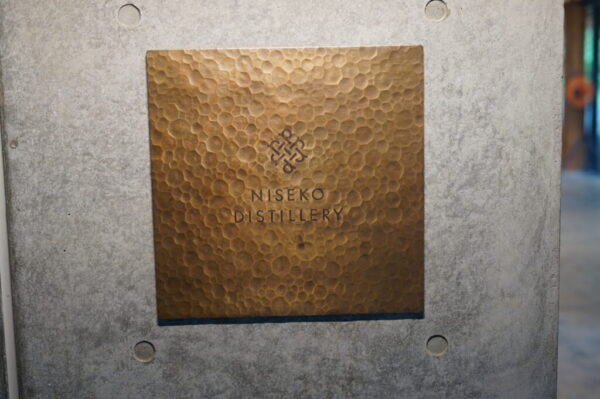 |
1-1.Whisky grown with the nature of Niseko
Hakkai Brewery (Hakkaisan) has been producing sake and whisky in Uonuma, Niigata for many years.
While utilizing this experience, the town of Niseko, Hokkaido, was chosen as a new stage in the company’s history.
As part of a regional development project at the ski resort of Naeba in Niigata, Japan, we made a series of visits to Niseko 15 years ago.
Through these visits, we found that Niseko’s climate and environment were extremely suitable for malt whisky maturation, and we decided to make full-scale whisky in this region. In cooperation with the town, the Niseko Distillery was born.
The construction project was undertaken on the premise that the town-owned land would be leased and that nature would not be harmed. The trees on the site were not cut down, and approximately 2,000 locally-grown larch trees were used for construction materials. Under the philosophy of “local production for local consumption,” the distillery was completed in harmony with the local nature.
The first thing that overwhelms you when you visit the Niseko Distillery is its architectural beauty. The building is made entirely of wood, and you can see the warmth of the space with the abundant use of larch, a locally grown wood. The number of larch trees used in the distillery is approximately 2,000.
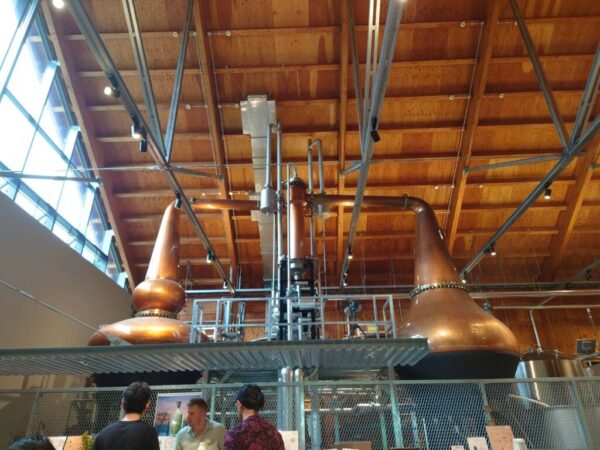 |
 |
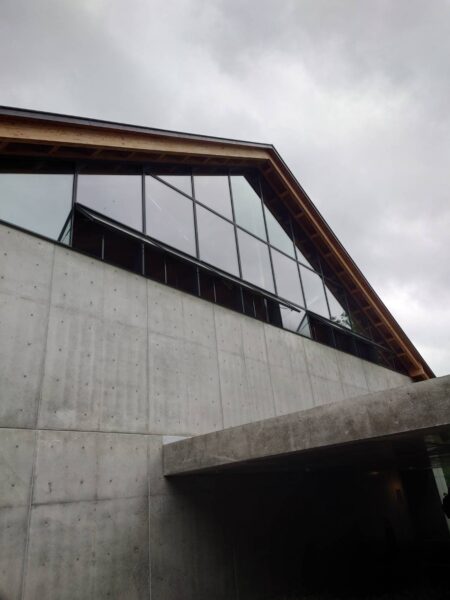 |
Once you step inside, the faint scent of wood wafts through the air along with the aroma of distillation, and the scale and beauty of the place is so awe-inspiring that the word “breathtaking” is appropriate.
The refined, lean design and clean, austere atmosphere. You can immediately sense that this is not just a sake brewing facility, but a place where nature and aesthetics coexist.
This delicate philosophy is also reflected in our products.
whisky is carefully crafted from raw materials to fermentation and maturation, aiming for a “refined and delicate taste. On the other hand, gin is made with a focus on a “clear and smooth” mouthfeel, and has gained worldwide acclaim as Ohoro gin.
Of particular note is the positive impact of Niseko’s unique climate on the ripening environment. During the winter season from December to March, approximately 70% of visitors are guests from overseas. Tourists come from all over the world for the powder snow.
In addition to the quality of the snow, Niseko is also characterized by temperatures that do not drop too low, which is ideal for whisky maturation.
1-2. Distillery Details
The brewing water used at the Niseko Distillery is the Annupuri Mt. It is soft water with a hardness of about 33, similar to the water in Uonuma, Niigata, where Hakkaisan (Mt. Hakkaisan) is located. It is soft and has no peculiarities, making it ideal for sake brewing.
This water is drawn from a well and stored in a large storage tank for use throughout the distillery. Next to the tank is a tank of the same size that stores heated water, which is also used in the saccharification process.
It is impressive that the blessings of nature are utilized as they are and carefully reflected in the flavor of the sake.
1-2-1.Gin production
Craft gin that “continues” into the future
Ohoro Gin is a craft gin made at the Niseko Distillery. Its name comes from the Ainu word “Ohoro,” meaning “to continue.
The distillery used for production is a hybrid distiller made by Arnold Holstein, Germany. This equipment is used exclusively for gin and is highly functional for both steeping and vaping.
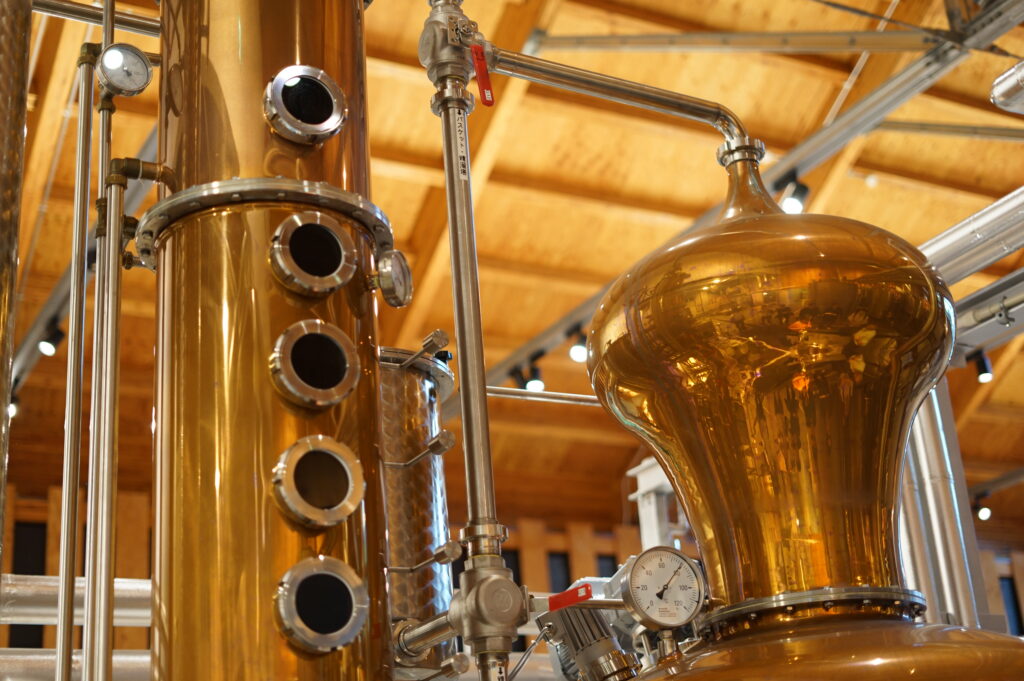
The botanicals that form the basis of gin’s aroma include juniper berries, as well as a variety of other botanicals such as yachiyanagi, Japanese mint, grapefruit, lime, lemon, and yuzu.
These are steeped in the base spirit for one day and distilled the next day to bring out the full aroma and flavor of the original ingredients.
In gin production, the Niseko Distillery also values its ties with the local community.
A typical example of this is a special version of ohoro gin that uses lavender, the town flower of Niseko, grown by local high school students. The carefully dried and selected flowers are used as the gin’s botanicals and fragrance.
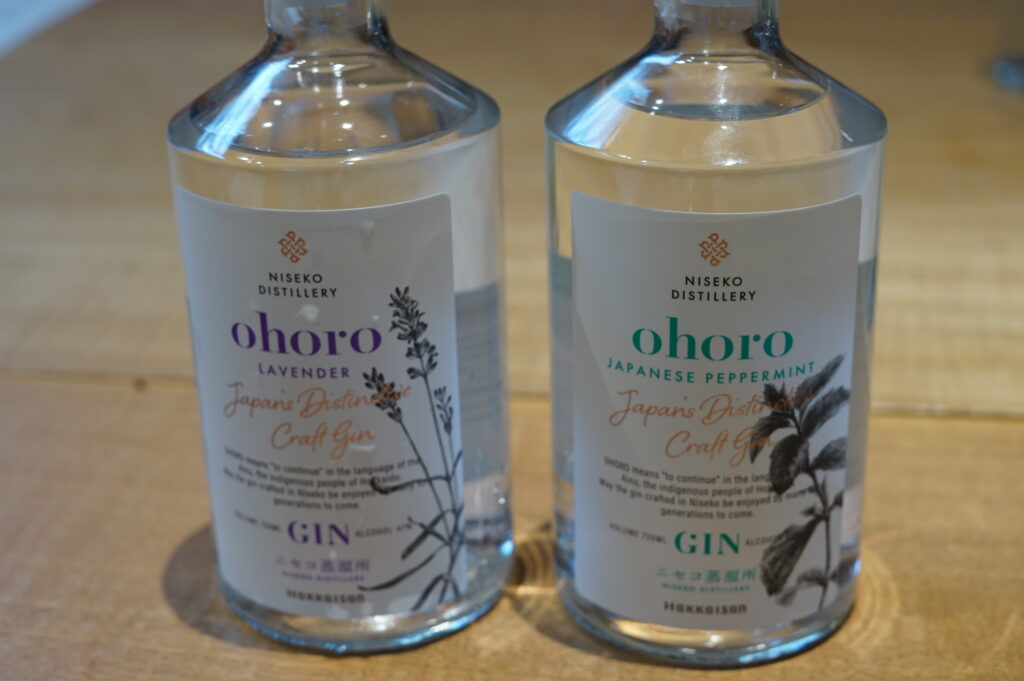 The style is to not bottle the wine immediately after distillation, but to allow the liquor to blend for about three weeks before bottling. The process from distillation to bottling takes about a month, and the finishing touches are made with an emphasis on flavor settling.
The style is to not bottle the wine immediately after distillation, but to allow the liquor to blend for about three weeks before bottling. The process from distillation to bottling takes about a month, and the finishing touches are made with an emphasis on flavor settling.
1-2-2.Whisky production
① Preparation and Raw Materials
Amount of malt used per batch: 1 ton of malt per batch. Three brewing sessions per week.
Ingredients: Imported malt from Crisp (UK).
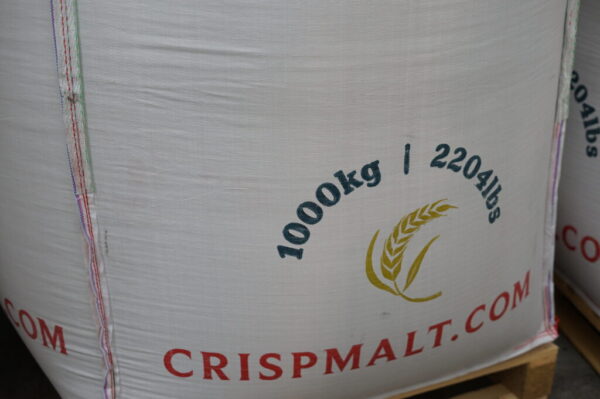
② Saccharification and Fermentation
Saccharification equipment
using mash tans made in Slovenia
The alcohol content of the unrefined must is about 7%
Fermentation time is 4 days
Approximately 5,000 liters of wort per batch
Fermentation tanks: wooden vats made of Douglas fir (beimatsu). Three vats made of Japanese wooden vats.
Draff is reused as feed in neighboring communities.
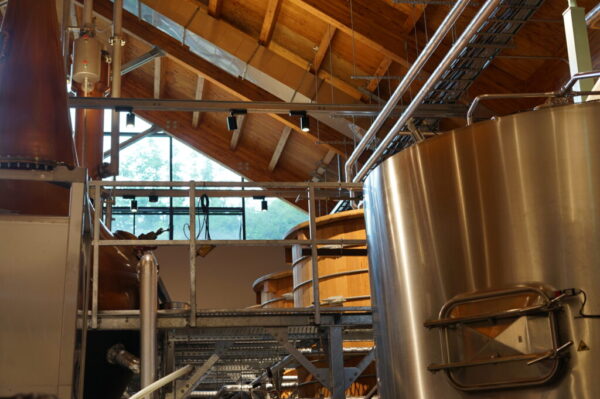
③ distillation process
The distiller is made by the well-known Forsyth company
First distillation: straight type, redistillation: bulge
Parallel straight neck, heat source is steam-heated
As a distillation step
5000L/7% unrefined sake is first distilled → 2000L/20%
Further redistillation → 500L/65-70% new pot
The volume of unrefined sake obtained in one batch is 400-500L, which is about one bottle of puncheon in maturation described below.
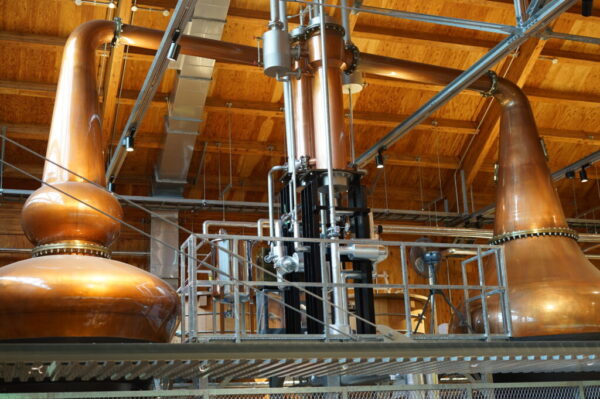
④ Saccharification and Fermentation
Six types of barrels available to the public
1. New white oak barrels (manufactured by Ariake Sangyo, 450L puncheon size)
2. Bourbon barrels
3. French wine barrels
4. Japanese wine casks
5. Sherry casks (Oloroso, Pedro Ximenez, cream)
6. Reconstituted casks are also utilized
Many of the sizes were large.
※The wooden building of the cellar is also a surprise.
First aging room (dunnage type): approx. 400 barrels
Second aging room (rack type): can hold up to 1,000 barrels (currently about 350 barrels)
Future expansion is of course in the works, but is being carefully considered due to rising construction costs.
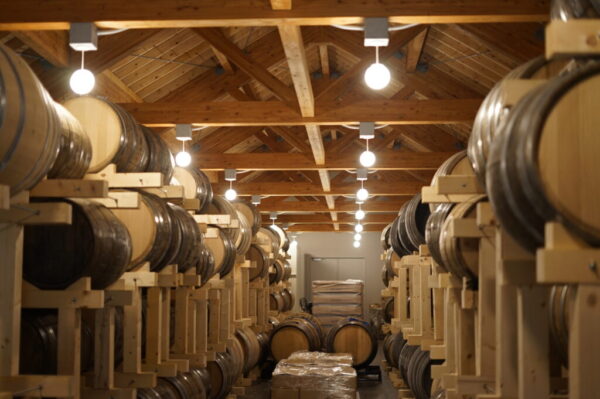
⑤ Climate and ripening environment
Temperature Characteristics
In summer, temperatures around 30°C have become normal in recent years.
Winters can get as cold as -15°C, but the lack of extreme cold is one of the reasons for Niseko’s powdery snow.
Niseko’s unique climate is also a favorable environment for maturing, which is done slowly in large barrels.
⑥Prospects for whisky in the Future
From Niseko to the World, a Story of Maturity
Hakkai Brewery has already released a single grain whisky Uonuma 8year, at its distillery in Uonuma, Niigata, and is building a track record in whisky production.
On the other hand, there is already a stock of malt whisky produced at the Niseko distillery that has been aged for about five years. The company plans to release a blended whisky made from the two distilleries in the near future, which is expected to bring the unique flavors of the two distilleries to the market.
What is most noteworthy is the future development of Niseko single malt.
This is a long-term plan, with a maturation period of 10 years or more in mind, and we look forward to the day when the carefully nurtured malt will be completed as a bottle that will surprise the world.
The Niseko distillery aims to create a unique taste by walking with nature and connecting with the local community.
The story of whisky that begins here is only the beginning.
Lastly: Recommended Books on Japanese Whisky
If you want to learn more about Japanese whisky, which is a global trend, we highly recommend these books.
(1).Whisky Galore Vol.29 December 2021 issue
In the December 2021 issue of Whisky Galore, published by the Whisky Culture Research Institute, we report on 11 Japanese craft distilleries, including some that are open to the public for the first time, under the title of “Japanese Whisky Craft Frontline,” the first of three consecutive issues. Why did the popularity of Japanese whisky and the craft boom occur? We will examine with interviews. Chichibu Distillery / Chichibu No.2 Distillery / Mars Shinshu Distillery / Mars Tsunuki Distillery / Kanosuke Distillery / Hioki Distillery / Ontake Distillery / Osuzuyama Distillery / Kaikyo Distillery / Hanyu Distillery / Konosu Distillery
(2). Japanese Whisky as an Education for Business
This is a book written by Mamoru Tsuchiya, a world-famous whisky critic and representative of the Whisky Culture Research Institute, titled “Japanese Whisky as a Culture that Works for Business” .
The book covers the basics of whisky, the introduction of whisky to Japan, the birth of Japanese whisky, advertising strategies and the rise of Japanese whisky, and the current rise of craft distilleries. This is a book that summarizes Japanese whisky in a very easy to understand way.
(3). Whisky and I (Masataka Taketsuru)
Masataka Taketsuru, the founder of Nikka Whisky, devoted his life to brewing whisky in Japan. This is a revised and reprinted version of the autobiography of a man who simply loved whisky and talked about himself. The book vividly depicts the days when he went to Scotland alone to study as a young man and overcame many hardships to complete Japanese whisky, as well as his companion, Rita.
(4). A Letter of Challenge from a New Generation Distillery
Launching in 2019. With the world experiencing an unprecedented whisky boom, what were the managers of craft distilleries thinking and what were their thoughts as they took on the challenge of making whisky? This book tells the stories of 13 craft distillery owners, including Ichiro Hido of Venture Whisky, famous for his Ichirose Malt, who inspired the birth of craft distilleries in Japan.
(5). Whiskey Rising
This is the Japanese version of Whisky Risng, published in the US in 2016, with much updated content. Not only does it describe the history of Japanese whisky in detail, but it also includes data on all the distilleries in Japan, including the craft distilleries that have been founded in recent years. The book also includes descriptions of the legendary bottles that have been released, as well as information on bars where Japanese whisky can be found.








